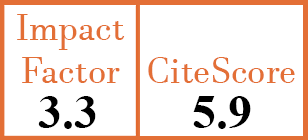Full Papers
Risk of malignant melanoma and non-melanoma skin cancer in rheumatoid arthritis patients initiating methotrexate versus hydroxychloroquine: a cohort study
H. Lee1, S.K. Chen2, N. Gautam3, S.M. Vine4, M. He5, R.J. Desai6, M.E. Weinblatt7, R.J. Glynn8, S.C. Kim9
- Division of Pharmacoepidemiology and Pharmacoeconomics, Brigham and Women's Hospital and Harvard Medical School, Boston, MA, USA.
- Division of Pharmacoepidemiology and Pharmacoeconomics, Brigham and Women's Hospital and Harvard Medical School, Boston, MA, USA.
- Division of Pharmacoepidemiology and Pharmacoeconomics, Brigham and Women's Hospital and Harvard Medical School, Boston, MA, USA.
- Division of Pharmacoepidemiology and Pharmacoeconomics, Brigham and Women's Hospital and Harvard Medical School, Boston, MA, USA.
- Division of Pharmacoepidemiology and Pharmacoeconomics, Brigham and Women's Hospital and Harvard Medical School, Boston, MA, USA.
- Division of Pharmacoepidemiology and Pharmacoeconomics, Brigham and Women's Hospital and Harvard Medical School, Boston, MA, USA.
- Division of Rheumatology, Inflammation, and Immunity, Brigham and Women’s Hospital and Harvard Medical School, Boston, MA, USA.
- Division of Pharmacoepidemiology and Pharmacoeconomics, Brigham and Women's Hospital and Harvard Medical School, Boston, MA, USA.
- Division of Pharmacoepidemiology and Pharmacoeconomics, and Division of Rheumatology, Inflammation, and Immunity, Brigham and Women’s Hospital and Harvard Medical School, Boston, MA, USA. sykim@bwh.harvard.edu
CER15477
2023 Vol.41, N°1
PI 0110, PF 0117
Full Papers
Free to view
(click on article PDF icon to read the article)
PMID: 35616586 [PubMed]
Received: 08/01/2022
Accepted : 19/04/2022
In Press: 10/05/2022
Published: 23/01/2023
Abstract
OBJECTIVES:
To characterise the incidence rate of skin cancer associated with methotrexate and hydroxychloroquine in older adults with rheumatoid arthritis (RA).
METHODS:
RA patients aged ≥65 years who initiated methotrexate or hydroxychloroquine as their first disease modifying antirheumatic drugs (DMARDs). The primary outcome was new occurrence of any skin cancer (i.e. malignant melanoma or non-melanoma skin cancer; NMSC) based on validated algorithms (positive predictive value >83%). Secondary outcomes were malignant melanoma, NMSC, basal cell carcinoma (BCC), and squamous cell carcinoma (SCC). We estimated the incidence rates (IRs) and hazard ratios (HRs) for each outcome in the 1:1 propensity score (PS)-matched methotrexate and hydroxychloroquine groups.
RESULTS:
We included 24,577 PS-matched pairs of methotrexate and hydroxychloroquine initiators. Compared with hydroxychloroquine (IR 25.20/1,000 person-years), methotrexate initiators (IR 26.21/1,000 person-years) had a similar risk of any skin cancer [HR 1.03 -(95%CI 0.92, 1.14)] over a mean follow-up of 388 days. The HR (95%CI) associated with methotrexate was 1.39 (0.87, 2.21) for malignant melanoma, 1.01(0.90, 1.12) for NMSC, 1.37 (1.13, 1.66) for BCC, and 0.79 (0.63, 0.99) for SCC compared with hydroxychloroquine.
CONCLUSIONS:
In this large cohort of older RA patients initiating methotrexate or hydroxychloroquine as their first DMARD, we found no difference in the risk of skin cancer including malignant melanoma and NMSC. However, for specific components of NMSC, methotrexate initiators had higher risk of BCC but lower risk of SCC compared with hydroxychloroquine initiators.



